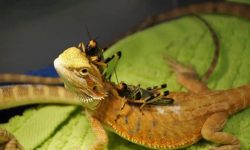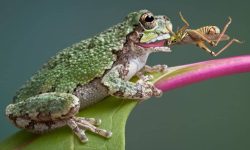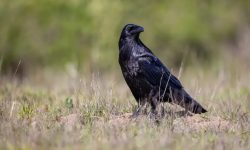Axolotls are one of the most fascinating aquatic creatures in the world. Known as the “Mexican walking fish,” these amphibians are famous for their cute smiles, feathery gills, and extraordinary ability to regenerate body parts. But if you’re caring for one or simply curious about their diet, you might wonder: What do axolotls eat?
Feeding axolotls properly is crucial for their health, color, and growth. They are carnivorous by nature, thriving on a protein-rich diet. In this detailed guide, we’ll cover everything you need to know — from what axolotls eat in the wild to the 20 best foods you can offer in captivity to help them grow strong and healthy.
Understanding the Axolotl Diet
Axolotls are carnivorous amphibians, meaning they feed primarily on other animals rather than plants. In the wild, their diet consists of worms, small crustaceans, insect larvae, and tiny fish. They’re opportunistic feeders that use a suction method to draw prey into their mouths.
Unlike fish that chew, axolotls swallow their food whole. Their diet must therefore consist of soft, bite-sized pieces. Feeding them the wrong foods or overfeeding can cause digestive issues, bloating, or even impaction.
A balanced diet ensures healthy growth, vibrant coloration, and proper regeneration of limbs and gills. Let’s explore what axolotls eat both in nature and in home aquariums.
What Do Axolotls Eat in the Wild?
In their natural habitat — the lakes and canals of Xochimilco, Mexico — axolotls feed on whatever small prey they can find. Their diet mainly includes worms, insect larvae, crustaceans, and small fish. These food sources provide the proteins, fats, and minerals necessary for growth and regeneration.
Axolotls are nocturnal, meaning they hunt mostly at night. They rely on their sense of smell and movement detection to locate prey in the dark, using a quick vacuum-like motion to suck it into their mouth.
This natural feeding behavior can be mimicked in captivity by offering live or freshly frozen foods that move or release scent in the water, stimulating their natural instincts.
What Do Axolotls Eat in Captivity?
In aquariums, axolotls can eat a wide range of foods — from live worms and small fish to pellets and frozen treats. The key is to provide variety, ensuring they get all essential nutrients.
Juvenile axolotls need more frequent feeding (daily or every other day), while adults can be fed two to three times per week. Overfeeding is a common mistake that can lead to obesity or poor water quality.
Now, let’s explore 20 of the best foods axolotls love — both natural and prepared — to keep them healthy, active, and growing.
20 Best Foods Axolotls Love the Most

1. Earthworms
Earthworms are often considered the best all-around food for axolotls. They are rich in protein, easily digestible, and full of vitamins and minerals that support muscle growth and regeneration.
You can offer live or pre-cut earthworms. If collecting from outside, ensure they’re pesticide-free. Many keepers use red wigglers or nightcrawlers as staple foods for adult axolotls.
2. Bloodworms
Bloodworms — the larvae of midge flies — are a favorite among juvenile axolotls. They’re small, soft, and easy to digest, making them perfect for younger or smaller axolotls.
You can feed them live, frozen, or freeze-dried. Frozen bloodworms are most convenient and safe, as they reduce the risk of introducing parasites into your aquarium.
3. Blackworms
Blackworms are another excellent source of protein. They wriggle actively in water, stimulating axolotls’ hunting instincts. Live blackworms can survive in aquariums for days, allowing axolotls to snack naturally.
They’re best fed in moderation since they can burrow into substrate and hide. Rinse them thoroughly before feeding to remove debris or contaminants.
4. Daphnia
Daphnia, or “water fleas,” are tiny crustaceans that make excellent food for baby axolotls (called larvae). They’re nutrient-dense, boost digestion, and help young axolotls grow quickly without bloating.
Live Daphnia are preferred because their movement encourages feeding. They also help clean the water by eating algae and leftover particles before being eaten themselves.
5. Brine Shrimp
Brine shrimp are a popular choice for young axolotls, especially hatchlings. They’re high in protein and easy to digest, providing the energy needed for rapid growth.
Newly hatched brine shrimp (often called “baby brine shrimp”) are best for larvae under two months old. Adult axolotls can also enjoy frozen or live brine shrimp as an occasional treat.
6. Tubifex Worms
Tubifex worms are a high-protein, fatty food that axolotls find irresistible. However, wild-collected tubifex can carry parasites, so it’s safest to use freeze-dried or cultured worms.
They’re a good supplement but shouldn’t be the sole food source. Mix them with other worms or pellets to create a balanced diet.
7. Small Fish (Feeder Fish)
Axolotls sometimes eat small fish like guppies or minnows. These mimic their natural prey and provide stimulation. However, feeder fish must be quarantined and parasite-free before feeding to avoid health risks.
It’s best to offer small, soft-bodied fish occasionally, not as a staple. Overfeeding fish can make your axolotl too fatty and pollute the tank.
8. Ghost Shrimp
Ghost shrimp are nutritious and fun for axolotls to hunt. They’re rich in calcium and protein, supporting bone and gill health. Because they’re transparent and fast-moving, they add enrichment to feeding time.
Axolotls may take time to catch them, which encourages natural hunting behaviors. Be sure the shrimp aren’t too large or aggressive.
9. Mealworms
Mealworms are high in protein but also have a tough exoskeleton. If you feed them, it’s best to offer them sparingly and only to adult axolotls. Cut the heads off first to prevent biting and make them easier to digest.
They’re ideal as an occasional treat, not a daily meal, due to their high fat content and hard chitin shells.
10. Waxworms
Waxworms are soft, fatty larvae that axolotls love. They’re perfect for underweight or recovering individuals needing extra calories. Their smooth texture makes them easy to swallow.
Feed waxworms in moderation, as too much fat can cause digestive problems. Think of them as the “dessert” of the axolotl diet.
11. Red Wigglers
Red wigglers (a type of compost worm) are highly nutritious but sometimes release a bitter-tasting chemical when first introduced to axolotls. To reduce this, rinse them thoroughly before feeding.
Once accepted, they make an excellent staple food, especially for juveniles transitioning from small to large meals.
12. Pellets
Specially formulated axolotl pellets are among the easiest and most balanced food options. They’re designed to float or sink slowly, giving your axolotl time to eat. Look for pellets high in protein (40% or more) with no artificial fillers.
Pellets can serve as a staple diet when combined with live or frozen treats for variety.
13. Bloodworm Cubes
Frozen bloodworm cubes are a convenient feeding method. You can thaw and serve them with tongs or drop them directly into the tank. The scent immediately attracts axolotls.
These cubes are perfect for young axolotls transitioning to larger food items. They also reduce waste compared to live feed.
14. Beef Heart (Occasionally)
Beef heart is rich in protein and iron but should be offered sparingly. It’s not a natural food source and can make the water dirty quickly.
If used, offer small, finely chopped pieces occasionally to provide a protein boost. Always remove uneaten portions to maintain water quality.
15. Shrimp Pellets
Shrimp pellets designed for fish or bottom feeders are another good option. They contain essential minerals and amino acids that support axolotl health. Look for high-quality, additive-free varieties.
Because they sink, they’re easy for axolotls to find and eat, mimicking their natural feeding behavior.
16. Frozen Krill
Frozen krill provides excellent protein and omega-3 fatty acids that promote healthy skin and gills. It’s a nutritious alternative to live fish.
Make sure to thaw and chop krill before feeding to prevent choking. It’s best used as a supplement to worms or pellets.
17. Silkworms
Silkworms are a soft, nutrient-dense food that axolotls enjoy. They’re rich in calcium and low in fat, making them a healthier option than mealworms or waxworms.
They can be fed live or frozen, depending on availability. Their gentle movement also helps stimulate feeding interest.
18. Snails (Small, Soft-Shelled)
In the wild, axolotls occasionally eat small aquatic snails. These provide calcium for bone and shell health. In captivity, soft-shelled snails like ramshorns can be offered occasionally.
Avoid hard-shelled or large snails, which can cause impaction or injury. Always ensure the snails are parasite-free.
19. Microworms (for Baby Axolotls)
Microworms are perfect for newly hatched axolotls. They’re small, live, and move slowly — ideal for encouraging hunting behavior in young larvae. They provide vital nutrients for early development.
As axolotls grow, they can transition from microworms to brine shrimp and then to bloodworms or pellets.
20. Crustacean Mix (Occasional Treat)
A mixed crustacean blend — containing shrimp, krill, and daphnia — offers a balanced mix of protein and trace elements. It’s an excellent occasional meal to diversify your axolotl’s diet.
This mix mimics natural feeding conditions and promotes strong growth, healthy gills, and vibrant coloration.
Feeding Tips for Healthy Axolotls
Feed at the Right Time
Axolotls are nocturnal, so they prefer feeding during the evening or early night hours when they’re most active.
Use Tongs for Feeding
Using long feeding tongs keeps your hands clean and prevents startling the axolotl. It also helps target-feed individuals in community tanks.
Avoid Overfeeding
Too much food can cause bloating and pollute the water. Feed portions small enough that your axolotl finishes them within 2–3 minutes.
Clean Uneaten Food
Remove leftovers promptly to prevent water contamination, especially with meat-based foods that decay quickly.
Foods to Avoid Feeding Axolotls
Not everything that moves is safe for axolotls. Avoid:
-
Insects with hard shells (e.g., beetles, crickets) – hard to digest
-
Feeder fish from pet stores – risk of parasites
-
Raw meat or processed food – unnatural and fatty
-
Citrus or plant matter – axolotls can’t digest fiber well
-
Large snails or crustaceans – may injure their mouth or cause impaction
Feeding safe, high-protein, low-fat foods ensures long-term health and clean tank conditions.
How Often Should You Feed Axolotls?
-
Hatchlings: 1–2 times daily with live baby food (microworms, brine shrimp)
-
Juveniles: Once daily or every other day (bloodworms, pellets, or small worms)
-
Adults: 2–3 times weekly (earthworms, pellets, shrimp)
Always observe your axolotl’s appetite and adjust portions accordingly. A well-fed axolotl will have a rounded belly that’s not bloated.
FAQs About What Axolotls Eat
Do axolotls eat plants?
No. Axolotls are strict carnivores and cannot digest plant matter.
Can axolotls eat fish flakes or turtle pellets?
It’s not recommended. These foods don’t provide enough protein or the right nutrients.
Can axolotls eat frozen food?
Yes! Frozen worms, shrimp, or krill are safe if thawed before feeding.
Do axolotls eat at night?
Yes. They’re nocturnal and prefer feeding in low light.
Can axolotls overeat?
Absolutely. Overfeeding leads to obesity and poor water quality, so portion control is key.
Conclusion
Axolotls may look unusual, but their dietary needs are surprisingly simple — they thrive on protein, variety, and clean conditions. From earthworms and bloodworms to pellets and shrimp, feeding them the right foods supports growth, regeneration, and longevity.
Understanding what axolotls eat helps you mimic their natural diet and keep your aquatic pet healthy for years. With proper care, your axolotl will grow strong, vibrant, and endlessly fascinating to watch.






